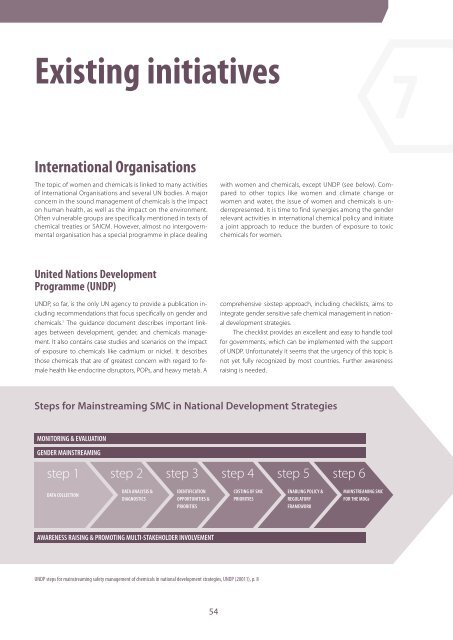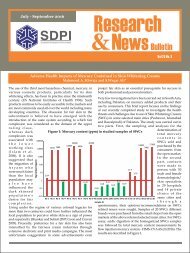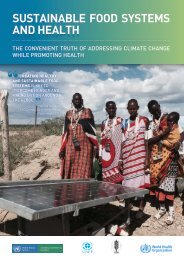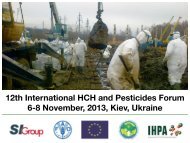Women and Chemicals
WomenAndChemicals_PublicationIWD2016
WomenAndChemicals_PublicationIWD2016
You also want an ePaper? Increase the reach of your titles
YUMPU automatically turns print PDFs into web optimized ePapers that Google loves.
Existing initiatives<br />
7<br />
International Organisations<br />
The topic of women <strong>and</strong> chemicals is linked to many activities<br />
of International Organisations <strong>and</strong> several UN bodies. A major<br />
concern in the sound management of chemicals is the impact<br />
on human health, as well as the impact on the environment.<br />
Often vulnerable groups are specifically mentioned in texts of<br />
chemical treaties or SAICM. However, almost no intergovernmental<br />
organisation has a special programme in place dealing<br />
with women <strong>and</strong> chemicals, except UNDP (see below). Compared<br />
to other topics like women <strong>and</strong> climate change or<br />
women <strong>and</strong> water, the issue of women <strong>and</strong> chemicals is underrepresented.<br />
It is time to find synergies among the gender<br />
relevant activities in international chemical policy <strong>and</strong> initiate<br />
a joint approach to reduce the burden of exposure to toxic<br />
chemicals for women.<br />
United Nations Development<br />
Programme (UNDP)<br />
UNDP, so far, is the only UN agency to provide a publication including<br />
recommendations that focus specifically on gender <strong>and</strong><br />
chemicals. 1 The guidance document describes important linkages<br />
between development, gender, <strong>and</strong> chemicals management.<br />
It also contains case studies <strong>and</strong> scenarios on the impact<br />
of exposure to chemicals like cadmium or nickel. It describes<br />
those chemicals that are of greatest concern with regard to female<br />
health like endocrine disruptors, POPs, <strong>and</strong> heavy metals. A<br />
comprehensive sixstep approach, including checklists, aims to<br />
integrate gender sensitive safe chemical management in national<br />
development strategies.<br />
The checklist provides an excellent <strong>and</strong> easy to h<strong>and</strong>le tool<br />
for governments, which can be implemented with the support<br />
of UNDP. Unfortunately it seems that the urgency of this topic is<br />
not yet fully recognized by most countries. Further awareness<br />
raising is needed.<br />
Steps for Mainstreaming SMC in National Development Strategies<br />
MONITORING & EVALUATION<br />
GENDER MAINSTREAMING<br />
step 1 step 2 step 3 step 4 step 5 step 6<br />
DATA COLLECTION<br />
DATA ANALYSIS &<br />
DIAGNOSTICS<br />
IDENTIFICATION<br />
OPPORTUNITIES &<br />
PRIORITIES<br />
COSTING OF SMC<br />
PRIORITIES<br />
ENABLING POLICY &<br />
REGULATORY<br />
FRAMEWORK<br />
MAINSTREAMING SMC<br />
FOR THE MDGs<br />
AWARENESS RAISING & PROMOTING MULTI-STAKEHOLDER INVOLVEMENT<br />
UNDP steps for mainstreaming safety management of chemicals in national development strategies, UNDP (20011), p. 8<br />
54







